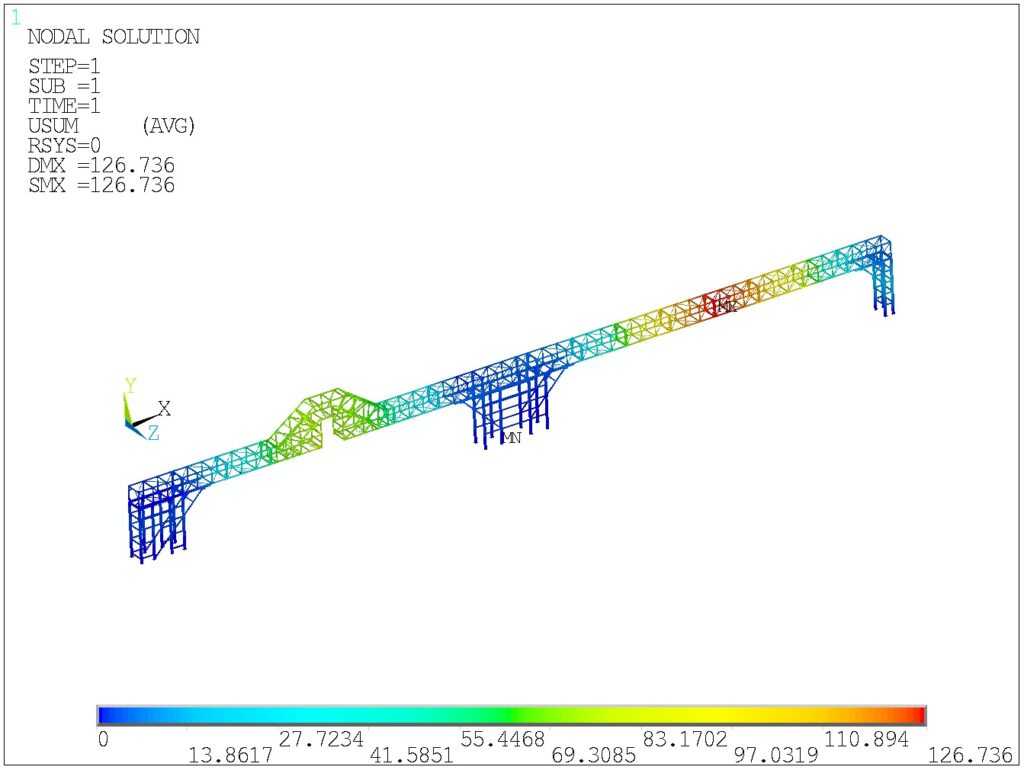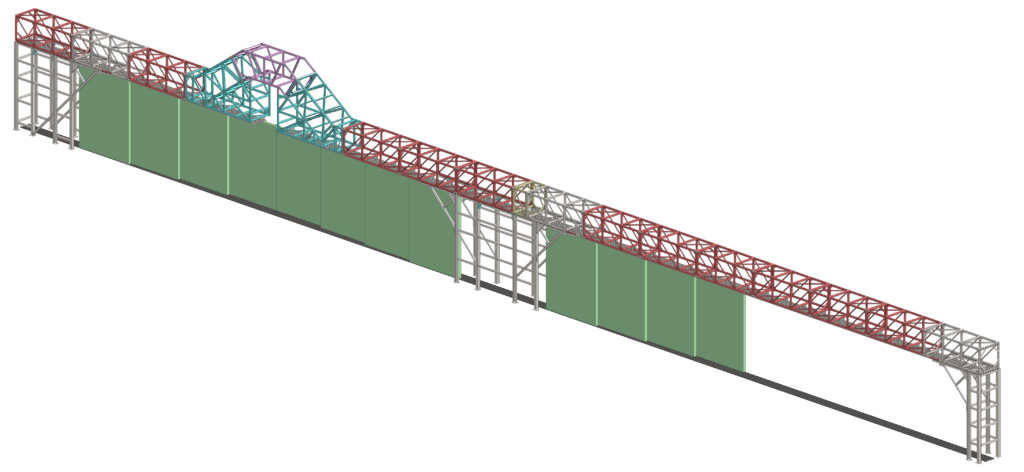The structural design and simulation of an aircraft hangar outrigger door are pivotal in ensuring the reliability and safety of this essential part of the hangar infrastructure. In this blog, we explore the technical aspects of the design and finite element analysis (FEA) simulation of such structures, with a focus on optimizing performance, ensuring durability, and meeting stringent safety standards.
Overview of Aircraft Hangar Outrigger Door Structure
An outrigger door is typically designed as part of large hangar facilities, providing additional clearance for the aircraft. Its design must withstand the operational loads and environmental conditions, ensuring longevity and minimal maintenance.
Key Structural Components:
- Trusses: Large trusses (e.g., TRUSS-1 to TRUSS-5 as indicated in design layouts) form the backbone of the structure, distributing loads efficiently.
- Vertical Columns: These columns, often consisting of robust materials, support the trusses and provide vertical stability.
- Rails and Supports: The top and bottom rails, supported by various beams such as NPB (narrow parallel flange beams) and ISMB (Indian Standard Medium Beams), guide the door’s movement and secure the structure.
These components, made of high-strength steel, are interconnected with bracing and rib structures to provide both rigidity and flexibility under load.
Structural Design Considerations
The design of the outrigger door must account for several factors, including:
- Load Distribution: The door structure should evenly distribute loads, including the weight of the door itself and dynamic forces from wind or operational activities.
- Material Selection: High-strength steel, such as ISMB beams, is often used for its ability to handle the high loads and dynamic stresses encountered during the door’s operation.
- Space Optimization: As seen in the design, dimensions and spacing of the trusses, vertical columns, and rails are meticulously calculated to ensure space efficiency without compromising structural integrity.
- Thermal and Environmental Stresses: The door must withstand environmental factors such as temperature variations, wind loads, and possible seismic activity.
Finite Element Analysis (FEA) for Structural Integrity
FEA is a crucial step in validating the design of the outrigger door structure. By simulating real-world conditions, engineers can predict how the structure will perform under various loads and stresses.
FEA Simulation Process:
- Model Creation: A 3D model of the door structure is created based on the design drawings, including all trusses, columns, and rails.
- Material Properties: The material properties (elastic modulus, yield strength, etc.) are input into the simulation software to ensure accurate behavior during loading.
- Meshing: The structure is divided into small elements for analysis. A finer mesh may be applied to critical areas like the junctions of trusses and vertical columns, where stress concentrations are expected.
- Boundary Conditions: Realistic boundary conditions, such as fixed supports at the base of the columns and loading from the door’s operation or environmental forces, are applied.
- Load Cases: Various load cases, including dead load (structure’s weight), live load (operational forces), and environmental forces (wind, seismic), are simulated to analyze the stress and deformation of the structure.
Results and Optimization
The FEA simulation results are used to assess:
- Stress Distribution: The software highlights regions with high stress concentrations. If the stress exceeds material limits, design modifications are made to redistribute the load.
- Deformation: Excessive deformation, especially in the rails or trusses, can affect the door’s function. The simulation helps ensure that deformations remain within acceptable limits.
- Factor of Safety: A critical outcome of the analysis is ensuring that the design meets the required factor of safety, accounting for uncertainties in loading conditions and material properties.

Conclusion
The structural design and FEA simulation of an aircraft hangar outrigger door structure are essential processes in ensuring the reliability and safety of the door system. By combining robust design principles with advanced simulation techniques, engineers can create a structure that withstands operational and environmental challenges while maintaining optimal performance throughout its lifecycle.
This detailed approach not only ensures compliance with safety standards but also reduces the risk of future structural failures, ensuring smooth operations for the aircraft hangar facility. Graphler Technology Solution provides CFD Analysis services, Engineering Animation services, stress analysis services and structural design services They have well expertise team with 10 yrs of industrial knowledge. Partnering up with the best structural analysis services provider or top product design companies will help you to discover new ideas.


